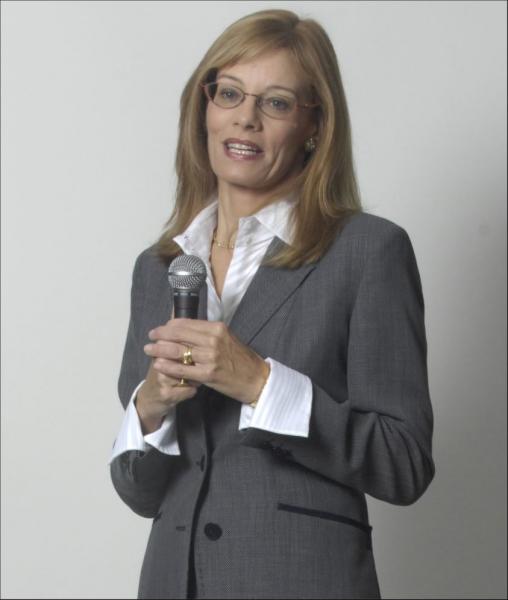Q&A with Cathryn Jakobson Ramin: The Billion Dollar Back Pain Industry

 Journalist Cathryn Jakobson Ramin's forthcoming investigative book on the back pain industry was born out of her own experiences with intractable back pain, which was only partly relieved by surgery. With the working title "The Fragile Column," the book is expected to be published in late 2012 by Crown Archetype. This is Ramin's second health book; her first, "Carved in Sand," examined forgetfulness, attention and the middle-aged brain.
Journalist Cathryn Jakobson Ramin's forthcoming investigative book on the back pain industry was born out of her own experiences with intractable back pain, which was only partly relieved by surgery. With the working title "The Fragile Column," the book is expected to be published in late 2012 by Crown Archetype. This is Ramin's second health book; her first, "Carved in Sand," examined forgetfulness, attention and the middle-aged brain.
I reached Ramin by phone earlier this month at her home in Mill Valley, Calif., where she is finishing up her writing. Our conversation has been edited for length and clarity.
Q: How did you come to write The Fragile Column?
A: I'd had back pain for years, but while I was reporting my first book, I traveled a lot and I became aware of pain in my leg and weakness in my foot. When I went on a book tour for "Carved in Sand" and then gave lectures, I was in terrible pain where I was hobbling on a toe to the podium, thinking I'd best do something about this or there's not going to be another book.
I started looking around for info about my condition and I was so naïve, like any other patient. There's a sea of information out there – even I, as an investigative reporter, couldn't find good information (on the agendas) of those offering treatment. I could sense that this was a big story and a dirty story. In the end, in looking for interventions that would work for me, I started to realize how many surgeries there are that don't work and what level of painkillers are prescribed.
Eventually, I opted for a minimally invasive surgery that was effective in relieving pain in my foot and leg, but after the surgery, my back was as bad as ever. I went to Florida to have this procedure in 2008. In the waiting room, I looked at the 60 people who'd flown in from around the world to have the procedure. I came back from that trip and said to my agent in New York, "I think I really have a story here."
Q. Tell us about your research. How did you get started?
A. In Florida, I started to Google to try to understand the history of the procedure I was having. I was researching and writing my book proposal from the end of December 2008 to March 2009. A book proposal has to look like you've done everything to research the book, but of course you haven't. I wasn't so much into PubMed at that point; I was looking at the New York Times and The Wall St. Journal. I noticed how powerful the various lobbying groups were, and where the American Medical Association stood, and where the spine surgeons stood, and how the pharmaceutical companies were involved – just enough to know what the hot points were going to be.
"Carved in Sand" was basically about bench science. There was never real money involved. I thought I'd look at who's speaking at the major conferences, as I did with "Carved in Sand," but I didn't realize that people who were speaking at major back pain conferences were in bed with pharmaceutical companies and medical device makers. I spent time running after the wrong speakers.
I was not welcomed anywhere I went. I was regarded with suspicion. I was banned from one conference – I was told I'd be escorted out, but I did go and talked to people coming out on coffee break. I was just going around saying, "I'm writing about back pain industry." Initially I was unable to set up interviews, but once I had people's trust, it was about a year before I could see where the bodies were buried. Now I'm connected across an industry that has plenty of aspects to it – I now know who to ask.
I went to South Korea, Spain, Poland, England. Good thing I had frequent flyer miles! There's a different understanding of back pain in South Korea: if you have sciatic pain, you call an ambulance and it takes you to a back hospital. There are five or six of these hospitals in Seoul. You do herbs, acupuncture, exercise and stay for about a week. It is not luxurious. It was incredible.
Q: How do you create a narrative that will keep readers interested?
A: The only way I know to do this is to say, "I'm taking you on a journey, you're going with me." I'm going to shuffle in a combination of some difficult science, some epidemiological data that you're not going to want to have, then I'm going to shuffle in patient stories and some of my experience. It's like a triple layer cake. It's continually necessary to move all three agendas forward in every chapter. I had an editor who says, if you believe it and have confidence, the reader will go everywhere with you.
With "Carved in Sand," I was the patient – that was the narrative. With my second book, Crown told me, we want you to be the reporter (and) not have this book be so much about yourself. The book is not meant as "five exercises to fix your back pain." This is a book that's meant to set an industry in context and to help people understand what they're being offered.
Q: What surprised you most in doing your research?
A: What surprised me most was how innocent and naive we are as patients about our backs and how they actually work. We have been sold an injury model that is just about universally accepted by patients. People will say, I injured my back getting out of bed or putting on my socks. I think, how on earth can you do that? It doesn't make it sense that there's a structural abnormality in your back and it needs to be corrected.
We've been sold that idea because there's tremendous ready access to MRIs – they've been able to point to a structural abnormality – like degenerative disc disease – which is no more a disease than grey hair). We've forgotten completely that (back pain) typically is a muscular issue.
Q: What advice do you have for journalists interested in covering the back pain industry regionally?
It's so easy (for reporters) to be sold a bill of goods. Local TV stations will tout a procedure because someone sends them a press release. No matter what kind of spine surgery a press release is touting, the outcomes are no better than 50 percent. (People in the industry) will lie. Be prepared. They will tell you anything. There are shenanigans going on with peer-reviewed research.
Without some really good reporters, I wouldn't have this book. A really good example is Milwaukee Journal-Sentinel reporter John Fauber. He can't be bought. He must be roundly hated in Milwaukee. He did major pieces that focused on conflicts at the University of Wisconsin and spinal fusion surgeries. He's local in his reporting and his reporting is fantastic.
It takes time. And time is the thing that reporters don't have. I think you have to approach anything being sold for the spine that's either interventional (anesthesiology, injections), pharmaceutical (anticonvulsants, anti-inflammatories, antidepressants) or surgical (microdiscectomy) with skepticism.
Q: How can patients stay informed and make smart choices?
First of all, read the book. Once they've done that, they're going to understand they really need to look at a specific kind of reconditioning which can be achieved in a number of ways. Things that we think that are good for us that should be useful such as taking a walk or swimming will not do the job. Things that people believe, like strengthening their cores through crunches, don't work.
Q. How do you balance reader service and industry analysis in your writing?
A. I think it's really hard. If my editor could make me do it, we'd have bullet points, but we won't. I think there are plenty of books spoon-feeding (readers) five things to do and not to do. I have a major investigative piece of work here and I'm not going to turn it into that kind of book. We have to think bigger. It's about what's being sold to you and why you're such a sitting duck for it. You're in pain, your livelihood might be on the line. You've got surgeons, anesthesiologists, even primary care doctors who can steer you on the wrong path. You have to understand the milieu that this is occurring in to make good choices - the industry is worth $50 billion, not counting disability payments, etc. that put it well over $100 billion annually.

